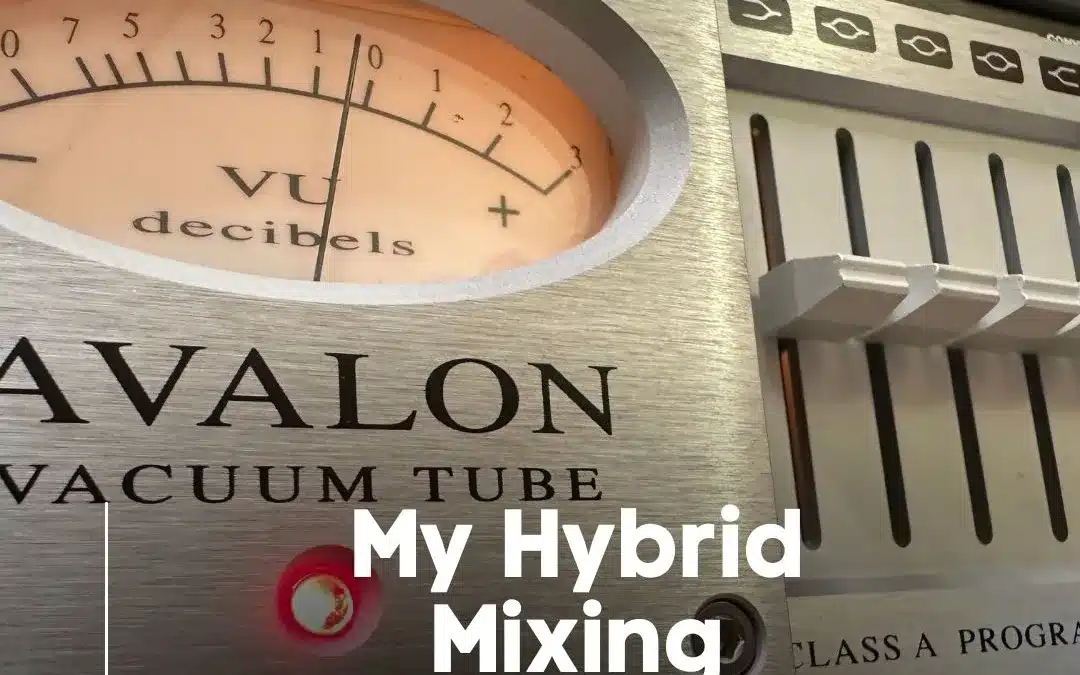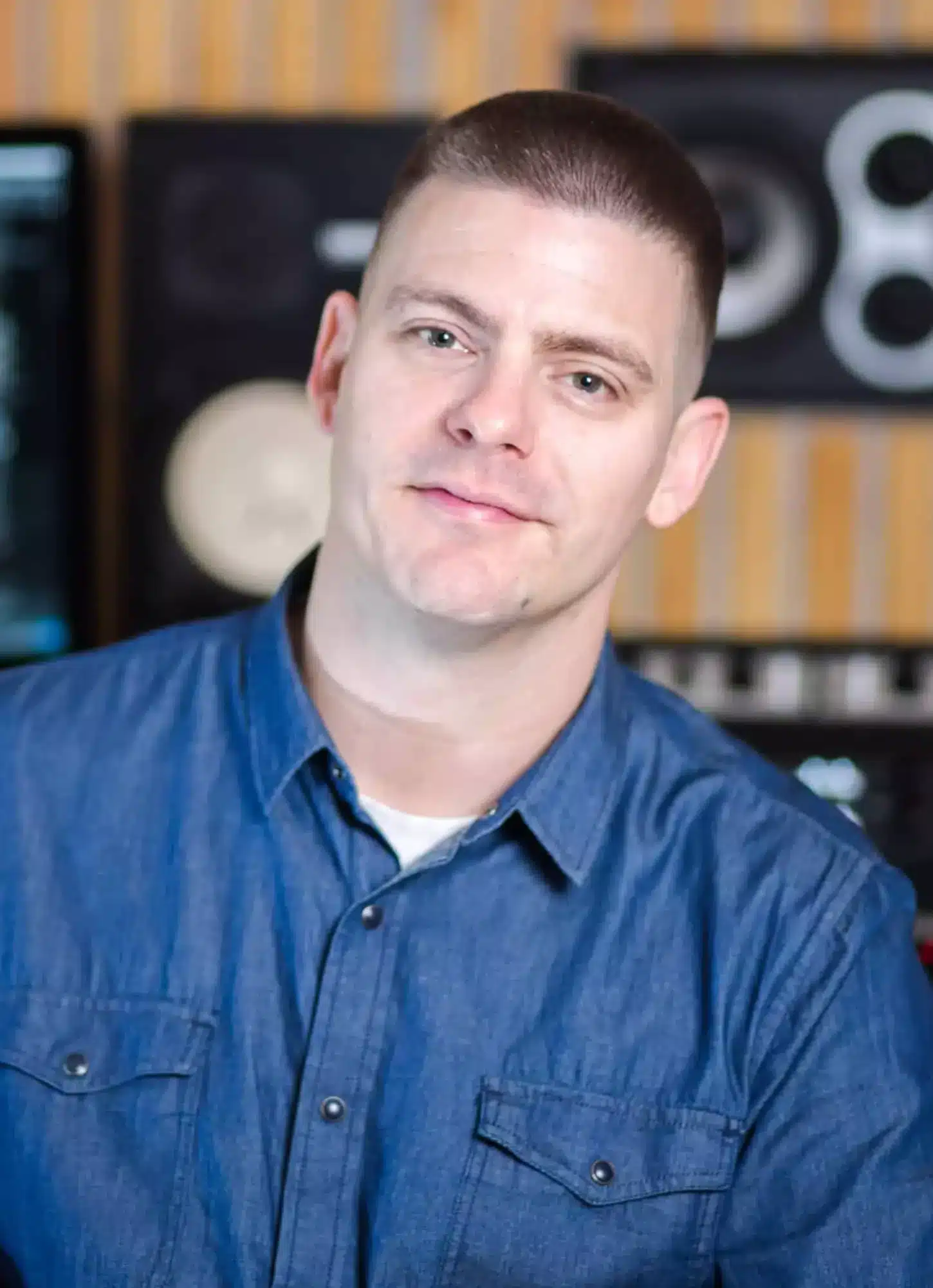Exploring Hybrid Mixing: The Best of Both Worlds
In the ever-evolving world of music production, the debate between analog and digital mixing continues to be a hot topic. Today, I’m excited to delve into the realm of hybrid mixing, a method that I believe offers the best of both worlds.
What is Hybrid Mixing?
The Three Pillars of Mixing
Before we jump into the nuances of hybrid mixing, let’s quickly define the three primary approaches to mixing:
-
Analog Mixing: Often referred to as the ‘old school’ method, this involves using analog tape and large format consoles like SSL or Neve boards. It’s known for its warmth and character.
-
In-the-Box Mixing: This method is purely digital, utilizing a computer and software. It’s popular for its convenience and accessibility.
-
Hybrid Mixing: The focus of our discussion today, hybrid mixing, combines the best elements of both analog and digital realms.
Why Hybrid Mixing?
The Benefits I’ve Discovered
In my studio, hybrid mixing isn’t just a technique; it’s an art form that brings out the best in my work. Here’s why I prefer it:
-
Enhanced Width and Separation: Hybrid mixing allows me to achieve a broader stereo image and clearer separation between instruments.
-
Richer High-End: The high frequencies seem to gain an ‘expensive’ quality, adding a professional sheen to the mix.
-
Efficient Mastering: On the mastering front, hybrid mixing lets me push into the converters effectively, reducing the need for heavy limiting.
Personal Preference and Efficiency
While it’s entirely possible to mix a record in the box, and many of my clients might not discern the difference, I find that hybrid mixing aligns more with my personal workflow. It’s not just about the end product; it’s about how the process makes me feel. Hybrid mixing is faster for me and more enjoyable. It’s about the confidence and satisfaction it brings to my creative process.
It’s Not Just About the Tools
The Essence of Mixing
I always emphasize to fellow producers and engineers: it’s not the tools that make the mix, but the skill and confidence you bring to the table. Whether my clients notice the subtle differences or not, what matters most is how the process resonates with me as an engineer.
Check Out the Walkthrough
For a more in-depth look at how I implement hybrid mixing in my studio, make sure to check out my video. It’s a detailed walkthrough of my setup and how I blend the analog and digital worlds to create something truly unique.
Hybrid mixing might not be for everyone, but for those looking to explore the synergies between analog warmth and digital precision, it’s a journey worth taking.
Video Transcirpt
Matty:
What’s up, guys? Matty here at Mixandmastermysong.com. Today, I’m going to show you how my hybrid mixing system works. Now, if you don’t know what hybrid mixing is, there’s basically three different forms of mixing or three different ways to mix. There’s the analog way, which is kind of the old school way with analog tape and a large format console like a SSL or neve board. There’s completely in the box as most of you probably work, which is just with a computer. Everything’s done in the computer. Everything’s mixed in the computer, and then there’s hybrid which uses a bit of the digital or in my case more so most of the computer, and then some analog gear as well.
Matty:
To me, it’s the best system for me. I like some of the features that analog gives you. I get a little bit more width. I get more separation. I feel like my high end’s a little more expensive sounding, and on the mastering side, I can push into the converters and I don’t have to limit so much. It tends to sound better to me. So, those are some of the reasons I do hybrid mixing.
Matty:
Before we get started, please make sure to subscribe and like so you can catch all my videos as soon as they drop. Let’s go.
Matty:
All right, guys. So, I took some pictures of my set up because I thought it’d be easier then me trying to film two different sections and so forth. This is the left rack, which is my mixing rack. I call it my mix rack, and then this is my mastering rack, which is the rack on the right of me. Now, I separate these because sometimes I’m just mastering a record, and I just want to go in and out of my mastering chain, and I don’t necessarily want to go through some of the stuff of my mixing chain.
Matty:
Now, how this all works is everything goes out the Apogee. I have two modules on this Apogee. One is a 16 IO and the other is a six IO plus a high end stereo input, and then they both have a host of digital IO which is mostly for my Avocet, which is to hear the dull, hear the rough mix, and to hear iTunes or Apple music, whatever you want to call it now.
Matty:
How this works is the SSL has 16 channels, right? They’re each stereo channels and I have them going out drums, high percussion, bass, music one, music two, vocals, and effects. Now, that is the same as here. This is my mixing template and actually, if you ever want to find out more about my mixing template, I’ll put a link in the video to my mixing template.
Matty:
The first four tracks here are all going to the drum track, which is number one on the SSL, and then high percussion’s number two. Bass is number three. Music’s one four. Music two is five. Vocals is six, and then effects is seven. I only actually use about half of this summing mixer. I don’t really feel the need for all this to be stretched out. Some people do, but for me, this works perfect.
Matty:
You’ll notice here some of these are going to B and some of these are going to A. What is that? Well, the SSL Sigma has two mix buzzes basically. I send my drums, bass, and percussion to mix buzz B which what mix buzz B is is my neve right here. I like to send my drums, bass, and percussion to a neve pre-amp, which for me gives it a bit of warmth and just kind of thickens things up and makes the drums sound better. All those go to B, right?
Matty:
From B, if you can see these arrows. It has the insert, so I can either turn on the 1073 or turn it off, which is pretty cool, and then it goes out into mix buzz A, okay. All my music and vocals stay just through the SSL. They don’t go through the neve, and that’s why it’s split up into two because I don’t want to thicken this up too much.
Matty:
After that, it goes right out of the SSL, stereo out into this SSL clone compressor, and I just hit it lightly just to kind of glue the whole mix together, right? After that, out of this SSL, it comes back in to studio one. I used to actually have it just go right to the mastering chain, but there’s certain things that I wasn’t able to do that I wanted to be able to do. So now, it comes back into studio one just as an aux track so I can hear it. Everything’s going out, and then after the compressor, back in.
Matty:
Now, the next step of how to get to the mastering side is over here on the main channel, right, and that’s through pipeline, which is if you don’t use studio one, it’s their IO system and it works really great. You can set them up and save them, and it offsets the samples so that your lane sees correct.
Matty:
And so, that goes out stereo out of the symphony, master out into the mastering chain, which I’ll bring up the picture here so you can see. Okay. That goes right into the- First, it hits the back CQ, and then my better maker mastering EQ, this one here, and then lastly where I get most of my level from is the mastering limiter, the better maker mastering limiter. The final conversion actually goes through the dangerous convert 80 plus, which is I feel a bit better converter than the symphony’s and it has some extra features that I really like and I really like the sound of this converter, and that comes back in through the pipeline. As you can see, it converts.
Matty:
Then, I can go through. If I needed to get a little bit louder, I can add a fab filter or something, but the cool thing is is if I always want to use my oxford inflator or any other plugin before it gets loud from the mastering limiter, I can and that’s why I separated the two sections in the session so that each one can work independently. And so, that is basically how my hybrid mixing system works.
Matty:
I know it’s a bit complicated and hopefully you guys could’ve followed along, but for me, it really brings the sound that I can’t always get in the box. I feel like sometimes my in the box mixes feel a little tight. It’s like a breath of fresh air to me. That’s the best way I’ve been able to explain it. It’s like the mix breathes more, and a lot of my sound is from a lot of these different boxes that I’ve collected. You’ll see, some of you guys noticed, I switch a lot of boxes in and out, and it’s just me on my journey trying to find my sound, and the SSL was something that I got rid of and then I got another one because I missed the sound, and that’s become a good part of my sound.
Matty:
I always tell people, you can mix a record in the box. You don’t need any of this stuff. I probably could mix a record in the box and honestly, a lot of my clients probably wouldn’t even be able to tell the difference between my in the box mix and my out the box mix. However, I find I can mix faster and I enjoy it more when I go outside the box and it just gives me a sound that I like, and maybe they would notice the difference. I always say, it’s more about the tools you use is what makes you feel better about mixing and more confident in your mix.
Matty:
If analog gear helps gives you just a little bit more confidence when you’re mixing, then I think you should use it. That’s more so than even the sound, but it does give me a sound that I really enjoy and that’s how I do it. If you got any questions or comments, please leave them below. If you need your song mixed and mastered, hit me up at Mixandmastermysong.com. You can also buy my presets and course there as well which really goes into in depth walk through of how I mix.
Matty:
All right, guys. We’ll see you next time.






